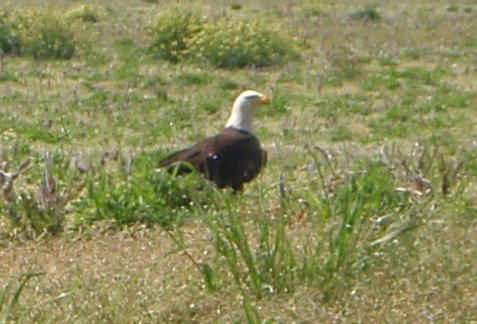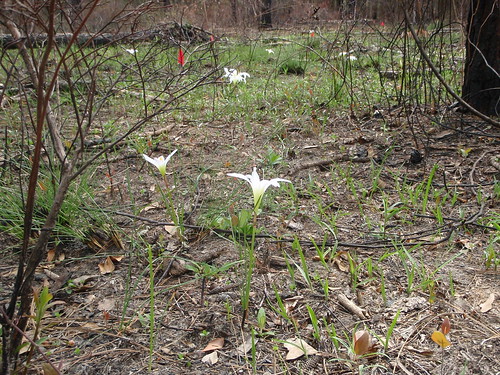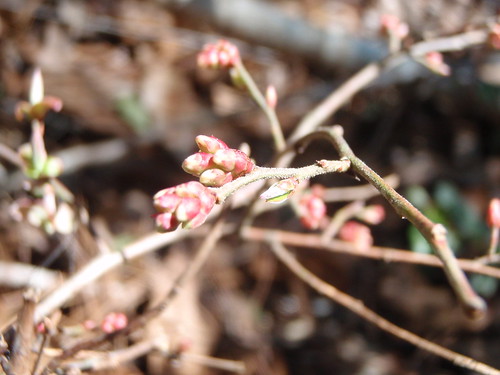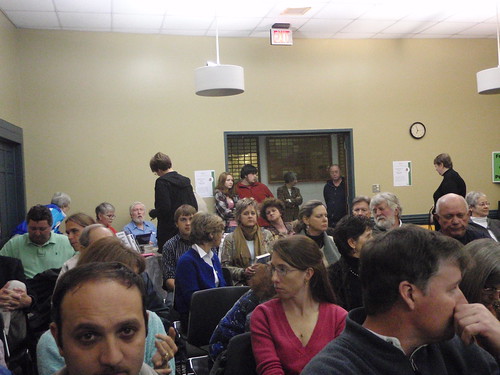A sky full of azaleas: Continue reading
Category Archives: Plants
Treat’s Rain Lily
 You may know these as Easter lilies, or “those lilies that grow in the ditches by the road in the spring.”
It turns out their real name is Treat’s Rain Lily,
and they are a native of south Georgia and north Florida,
plus a bit of Alabama, and don’t grow anywhere else.
We’ve seen them in Georgia counties along the Florida border
as far west as Cairo, but not any farther north.
Here’s
much more about these lilies.
You may know these as Easter lilies, or “those lilies that grow in the ditches by the road in the spring.”
It turns out their real name is Treat’s Rain Lily,
and they are a native of south Georgia and north Florida,
plus a bit of Alabama, and don’t grow anywhere else.
We’ve seen them in Georgia counties along the Florida border
as far west as Cairo, but not any farther north.
Here’s
much more about these lilies.
They really like where we burned this spring in the woods:
The red flags mark where we transplanted some longleaf pine seedlings.
Pictures by Gretchen Quarterman, 2-3 April 2010, Lowndes County, Georgia.
Divide and Diminish, or Preserve and Survive?
 Olivia Judson writes about
Divide and Diminish:
Olivia Judson writes about
Divide and Diminish:
A different process goes on when an island forms by splintering. Here, the ecosystem is pre-existing: the island is created with a set of residents already in place. But it is now too small to support them all.She’s not talking about prescribed forest burns, which are actually necessary for longleaf pine forest ecology. She’s talking about burns that destroy forests.What happens next is a kind of unraveling, a fraying, a disassembling such that the ecosystem becomes simpler, so as to fit the space that is now available. On those recently-created islands of Indonesia, for example, the smallest islands are home to many fewer species than the largest islands. And, as you’d expect, you don’t find big animals on the smallest islands either.
When we humans burn tracts of forest, or make islands in some similar way, the immediate impacts depend on a suite of factors, including how many islands there are, how big they are, and how close they are together. It also matters what is between them. Fields may be more hospitable to wildlife than roads or water; under some circumstances, life forms may be able to flit from one fragment to another, and the “island” nature of the fragments will be reduced. Perhaps we can use such patterns to shape how we use land, to try and minimize the impact we have.
Perhaps.
The once-mighty longleaf pine ecology that spread from eastern Virginia to east Texas now only exists in tiny islands separated by cities, fields, and roads. Maybe we should preserve the few patches that are left. This isn’t just about plants and animals, you know, it’s also about flood control, food supply, and living conditions.
Half a century ago we overused pesticides, in particular DDT, which caused birds’ eggs to become too fragile. Bald eagles vanished from many places. But sometimes they come back, when we stop poisoning them and instead save some habitat.
The eagle pictured was just sitting beside the road as we drove by. There are more in nearby counties. Picture by Gretchen Quarterman, 23 March 2010.
Seedlings of One Longleaf
Here’s what they look like just after they come up:
It’s a pretty big tree: Continue reading
Red Buds
Pictures by Gretchen Quarterman, Lowndes County, Georgia, 28 February 2010.
Though a country be sundered, hills and rivers endure;
And spring comes green again to trees and grasses
Where petals have been shed like tears
And lonely birds have sung their grief.
…After the war-fires of three months,
One message from home is worth a ton of gold.
…I stroke my white hair. It has grown too thin
To hold the hairpins any more.—A Spring View, Tu Fu (c. 750), trans. Witter Bynner
Sprouting Longleaf
Many people think it takes fire to make longleaf produce seeds. These pictured seedlings came from a tree that hasn’t had fire near it for more than ten years. So why so many seedlings this year? Continue reading
Bolting Longleaf
Frost
Mutant Pigweed vs. Glysophate-Resistant Corn, Soybeans, and Cotton
 It’s a funny thing about monocultures. They’re highly vulnerable to anything
that affects that particular variety.
Dr. Mae-Wan Ho writes:
It’s a funny thing about monocultures. They’re highly vulnerable to anything
that affects that particular variety.
Dr. Mae-Wan Ho writes:
The scene is set at harvest time in Arkansas October 2009. Grim-faced farmers and scientists speak from fields infested with giant pigweed plants that can withstand as much glyphosate herbicide as you can afford to douse on them. One farmer spent US$0.5 million in three months trying to clear the monster weeds in vain; they stop combine harvesters and break hand tools. Already, an estimated one million acres of soybean and cotton crops in Arkansas have become infested.The palmer amaranth or palmer pigweed is the most dreaded weed. It can grow 7-8 feet tall, withstand withering heat and prolonged droughts, produce thousands of seeds and has a root system that drains nutrients away from crops. If left unchecked, it would take over a field in a year.
Meanwhile in North Carolina Perquimans County, farmer and extension worker Paul Smith has just found the offending weed in his field [3], and he too, will have to hire a migrant crew to remove the weed by hand.
Here’s the good news: Continue reading
Janisse Ray in Moultrie, 26 Jan 2010
 Janisse Ray
spoke and read from her books in Moultrie last night.
The place was packed with a wide variety of people:
Janisse Ray
spoke and read from her books in Moultrie last night.
The place was packed with a wide variety of people:
Here’s her opening poem: Continue reading








